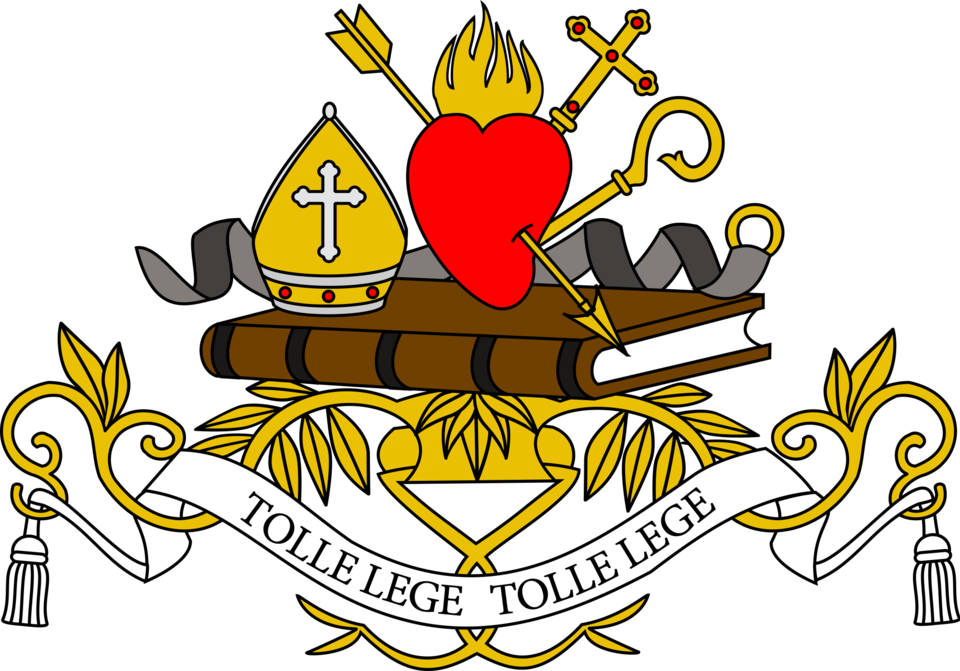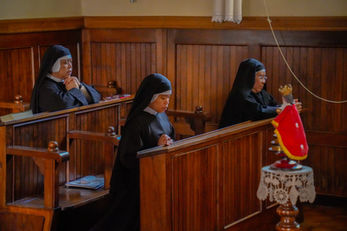
The Monastery
The Monastery of Santa Croce in Figline was established by a notarial deed dated October 25, 1542, under the patronage of the Confraternity of the Holy Cross, which also provided the premises and the small church where the nuns of the new community would be housed. Some work was carried out to make the structure suitable for cloistered life.
The first religious sisters arrived there on November 2 of the same year, and the monastic rule they followed was the Augustinian one, which they learned and practiced thanks to some sisters who had come specifically from the Florentine Monastery of Candeli.
Before long, the number of religious sisters grew, and the fame of this monastery and the holiness of life within it quickly spread—not only in the area of Figline but also in the surrounding towns and even in Florence itself.
In its 500 years of history, the nuns have faced many hardships: illnesses, deaths, epidemics—yet always accepted and overcome with generosity and gratitude to God for having been tested by Him and remaining always faithful brides.
The monastery has also faced many threats from the outside world: the rapid and turbulent changes in Italy’s political and social history, as well as new ideas in the fields of religion and philosophy that had gained ground especially in the last two centuries.
Foremost among these challenges was the suppression of monasteries and the confiscation of ecclesiastical property by Napoleon Bonaparte, not to mention the Leopoldine storm (under Pietro Leopoldo of Habsburg-Lorraine, Grand Duke of Tuscany) which, in keeping with new Jansenist ideas, led to the suppression of many monasteries and religious confraternities. The Monastery of Santa Croce suffered greatly, but the nuns held firm, and supported by prayer and trust in their heavenly Spouse, they did not allow their convent to be turned into a conservatory with a public school and boarding facility for girls—thus abandoning the cloister—as happened in other monasteries in nearby towns such as San Giovanni and Castelfranco di Sopra.
Looking at history, we can affirm that God’s plans are not those of men, for His will cannot be overridden by the whims and erratic impulses of humanity, which always has a limited vision of the universe.
With the unification of Italy and the law of July 7, 1866—a decidedly anti-clerical law—the closure of monasteries and the confiscation of Church property were once again imposed, so much so that the monastery and the church became state property and the nuns were expelled. Yet Providence did not take long to come to their aid.
At that time, the old hospital of Figline had recently moved to the Villa of San Cerbone, and the old building—owned by the Serristori Counts—was offered by Count Umberto himself to the Augustinian nuns for a nominal sum.
The new residence soon proved unsuitable for cloistered life, due to the cramped spaces and the lack of an open-air area where the nuns could spend a few hours each day to strengthen not only the spirit but also the body.
Finally, through the intervention of the then Bishop of Fiesole, Monsignor Cammilli, and the parish priest of Figline, Monsignor Barlacchi, negotiations were begun with the municipal authorities for the purchase of the monastery. On April 4, 1895, the monastery was returned to the nuns, and on October 24 of the same year, they moved back in.
If the previous centuries were difficult for the monastery and its nuns, the following ones—up to the present day—were no less challenging. The wisdom and zeal of those whom the Lord placed in charge of the community have always made it possible to overcome difficulties and move forward.
The diligence of the nuns, through their daily work—such as embroidering liturgical vestments and preparing altar breads—enabled them to survive without difficulty up to the present.
The age of the buildings has always required ongoing maintenance and restoration, and the appearance the monastery has today in its entirety is due to the wise and diligent work of the Mother Abbess, Sister Angelica.
In the last twenty years, although the monastery was beautiful and welcoming, perfectly suited to cloistered life, the death of many sisters and the advanced age of the remaining ones brought a certain sadness and sense of compassion when new vocations failed to appear. But once again, Providence came to our aid: two Filipino sisters from the Monastery of Santa Lucia in Rome, who had come temporarily to assist us, decided—with the consent of their superiors—to be incardinated into our community. Today, the community consists of ten solemnly professed nuns and one with simple vows.
From that moment, a new chapter began in the history of our monastery and of us nuns, including, among other things, the inauguration of a foundation in the Philippine town of Gubat, Sorsogon in the year May 1, 2003.
On February 2, 2026, the Monastery in Sorsogon will solemnly celebrate its 25th anniversary, commemorating the laying of its cornerstone on February 2, 2000, a historic milestone that marked the beginning of its sacred mission in the service of God and His people.














